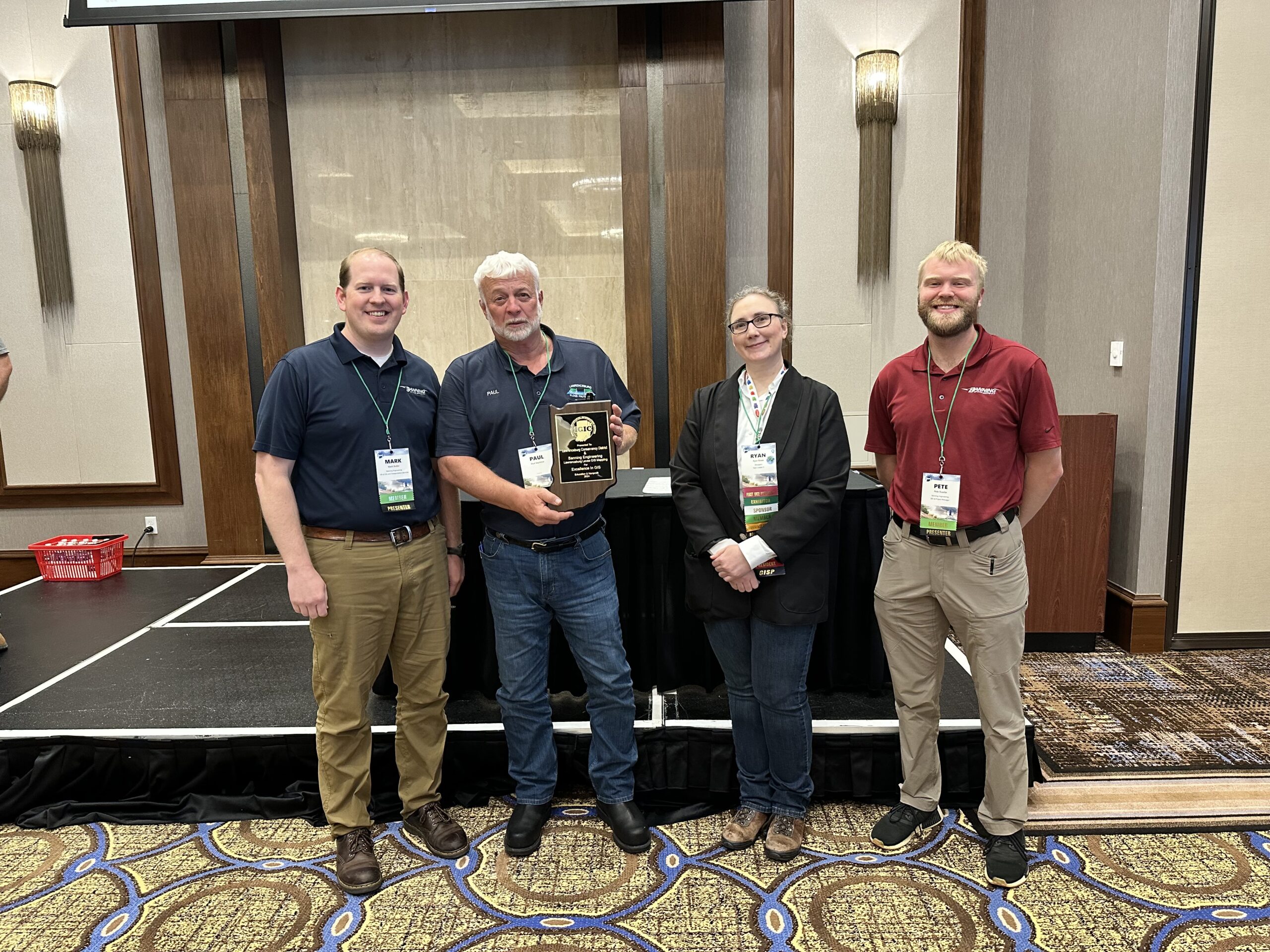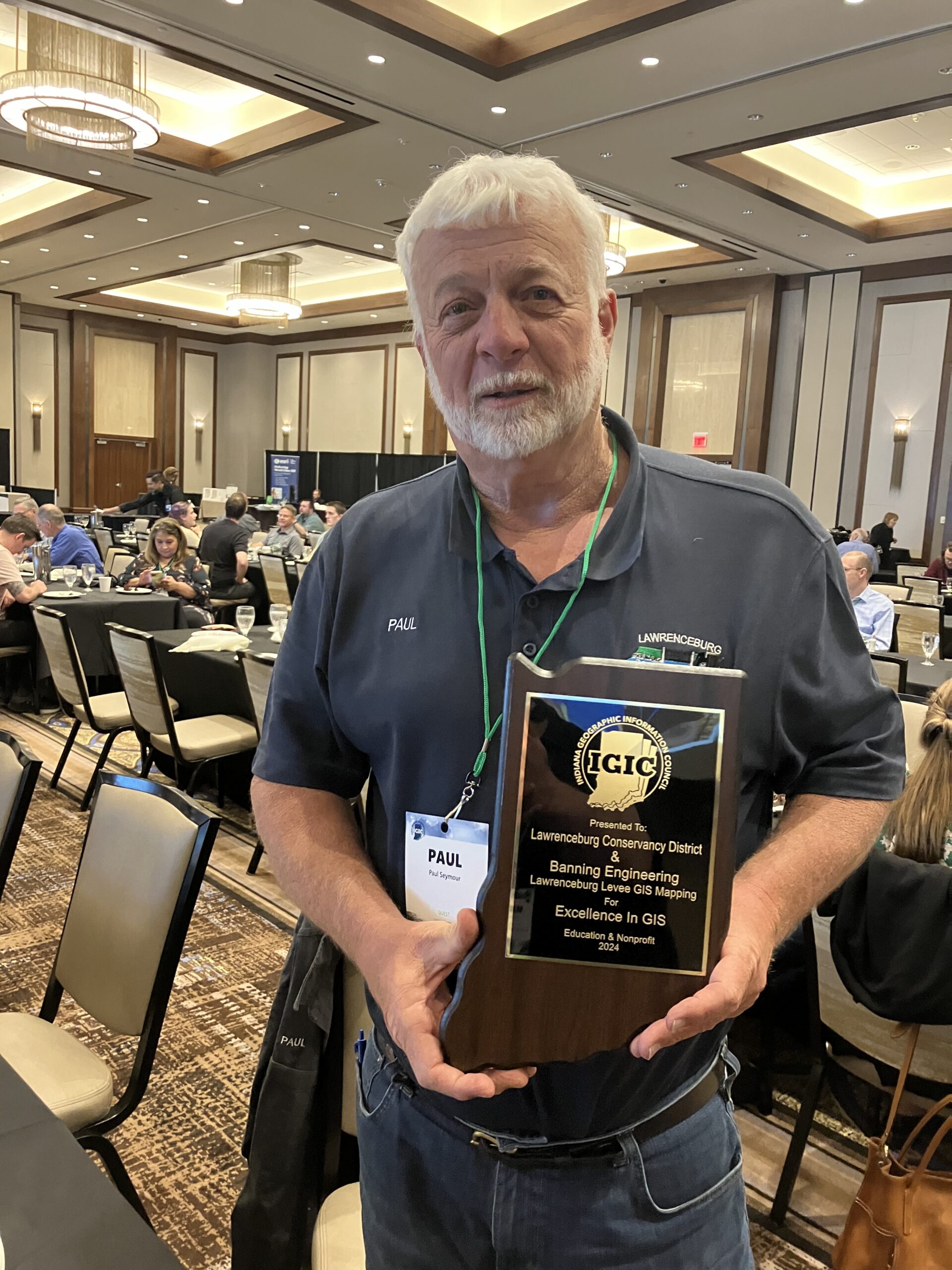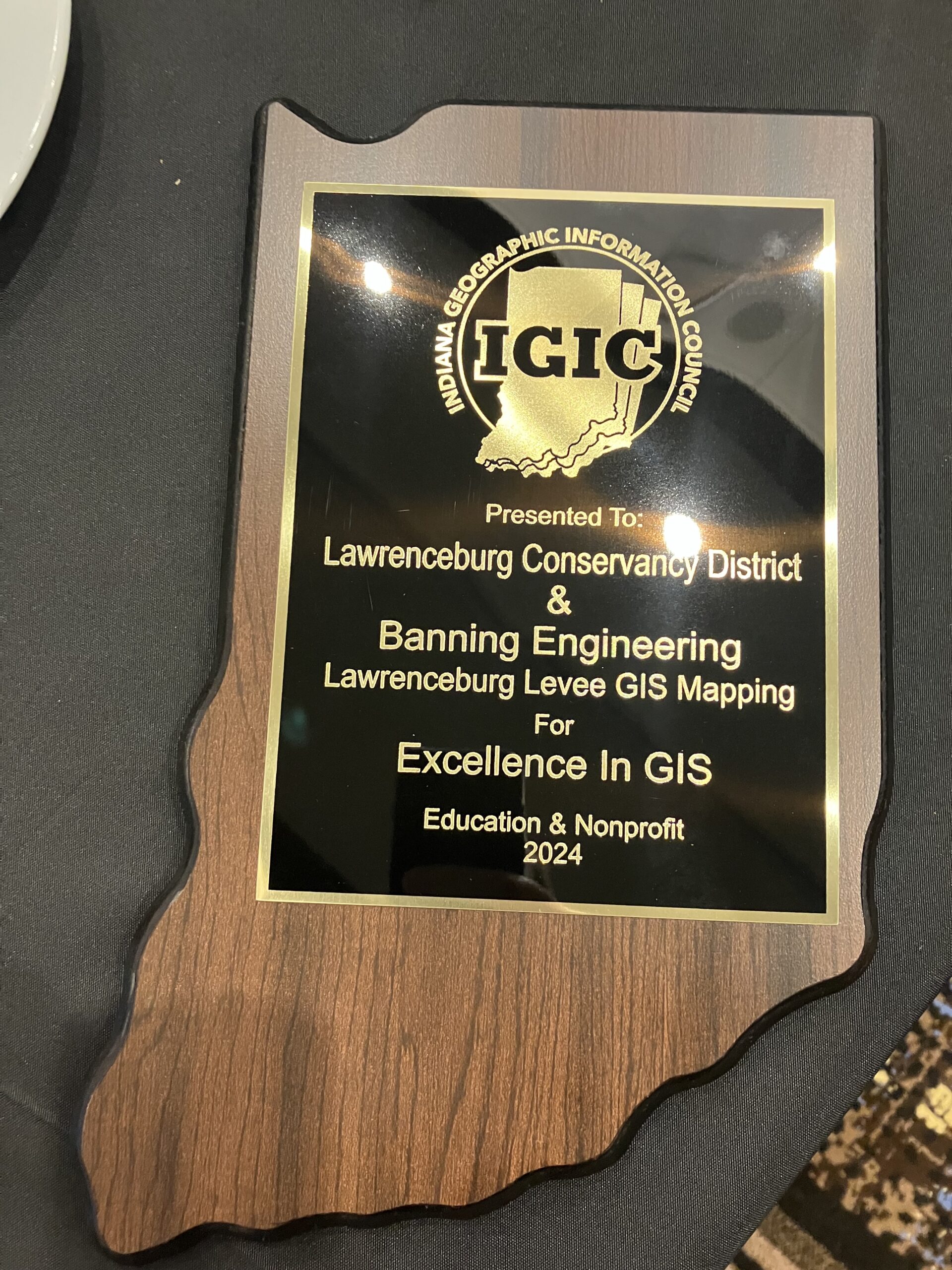Lawrenceburg Levee GIS Mapping
Lawrenceburg Conservancy District | 2024 Excellence in GIS Award Recipient



The Challenge: The Lawrenceburg Conservancy District (LCD) maintains the levee system that protects against flooding from the Ohio River. The levee involves many assets, including pump houses, flood gates, and relief wells. With so many responsibilities and assets to manage, the LCD crew was looking for a more efficient and convenient way to locate and manage the various features in their system.
The project also aimed to improve public outreach by educating the community on the levee system and better informing LCD’s board of directors about what is actually managed by LCD. Many community members were unaware of the various assets and aspects of the Lawrenceburg levee, so providing a visual representation of the system would be a major benefit in increasing awareness.
LCD also dealt with not having a system in place to be notified whenever a locate ticket was requested for an area in the levee footprint. Without being a part of the 811 network, no one was alerted when there was potential for someone to be digging in the levee area. LCD was interested in using a GIS solution to join the 811 network to start receiving notifications.
Actions to Resolve the Issues: LCD proactively jumped right into mapping their assets and moving towards a GIS-based system to manage their levee. Using a DA2 GPS unit, the LCD crew began mapping features along the levee, including piezometers, pump houses, relief wells, sluice gates, and other various utilities and assets. This gave them accurate locations on these features and allowed them to directly add data and attachments (such as old blueprints, images, and operational manuals) to the map. Old hand-drawn plans from the early 1940s were able to be georeferenced and overlayed onto the map as well, so the crew could compare original designs with current field conditions. This map can now be shown to the community and board members who may have questions about what is included in the levee system.
With the map in place, LCD was then able to delineate their levee footprint in GIS using the old design blueprints and create a shapefile of a “no-dig” zone. This shapefile, along with an application, was sent to the 811 network, allowing LCD to now receive notifications whenever there is any potential construction activity that may impact the levee area.
Project Results: Implementing a GIS-based management system for the levee has been a huge success for the Lawrenceburg Conservancy District and the overall Lawrenceburg community. With the assets mapped digitally and the information all at their fingertips, questions about specific relief wells or flood gates can be answered without having to go to the office and search for specific documentaition or a paper map. This access has saved LCD time and effort, helping them be more efficient and organized.
The map has also been a huge success in terms of better informing and educating the community about the levee system. The crew has attended various community events and displayed the map on a TV to show and teach students, residents, and board members what the various assets are and give them a visual to better explain the purpose of the levee.
Joining the 811 network using the GIS mapped areas is a huge improvement for levee safety and security. Having notifications of potential construction around the levee area allows the LCD crew to be much more aware of possible encroachments and issues, preventing potential damage to the levee thus improving the safety of the community.
Some of the LCD guys had this to say about the overall project: “We have been excited since our board approved Banning Engineering coming on board to help us map out and build our GIS project. It has been amazing learning how much can be built into the maps from a digital storage aspect and how easily we can access and share information regarding our levee systems to educate not just those in our organization but also our community.”
Learn more about the LCD by checking out their website. If you have any interest in mapping needs, please get in touch with us—we’d enjoy working with you to resolve any challenges you’re experiencing.
